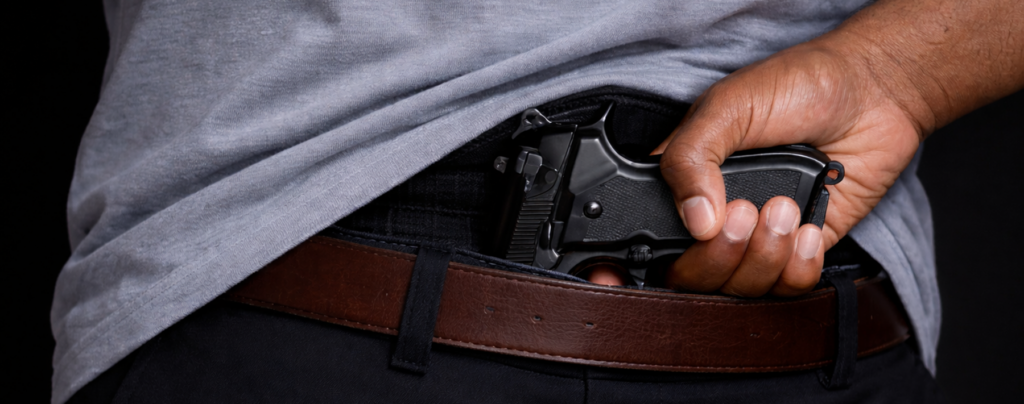Robinson v. State, 454 P.3d 149 (Wy. 2019)
A trooper saw Bryan Robinson driving below the speed limit on the freeway and noted when Robinson saw the trooper’s patrol car, he hit the brakes and slowed even more. The trooper also noticed Robinson was driving with an open sunroof even though the temperature was around 32 degrees. Robinson pulled behind a semi-truck. The trooper used a stopwatch to calculate the following distance and determined Robinson was following too closely.
The trooper stopped Robinson, told him he was going to issue a warning for following too closely and requested Robinson’s papers. Robinson explained it was a rental car and the agreement was on his mobile phone. Robinson handed over his driver license with shaking hands. The trooper noticed snack food, energy drinks, water, trash and a backpack on the front passenger floorboard.
The trooper directed Robinson to sit in the front seat of the patrol car while the trooper issued a written warning. The rental agreement showed Robinson had rented the car on December 26 in Las Vegas and was supposed to return it to the same location on December 27 (the traffic stop occurred on December 28). Robinson explained he was driving to Kansas City to participate in a dance competition on December 29 and he planned to leave the car in Kansas City, pay the fee for a late return in another city and fly back to Las Vegas. Robinson showed the trooper a flyer for the dance competition scheduled for December 30, not December 29.
The trooper checked Robinson’s criminal history and found one prior misdemeanor marijuana arrest. Robinson claimed he had no criminal history. The trooper decided to call for a drug detector dog team. When the dog and handler arrived for a dog sniff of the car, the dog gave a positive response. A search revealed approximately 10 pounds of marijuana and the trooper arrested Robinson.
The trial court concluded, and the Wyoming Supreme Court affirmed, the two-second rule was an appropriate measure for determining a violation of the statute prohibiting following at an unsafe distance.
Robinson challenged the basis for the stop and the detention for a drug dog sniff. The trooper testified he was trained to use the two-second rule by the Wyoming Highway Patrol. He explained: “I was trained that the average natural perception and reaction time, so the time that someone can perceive and react, is 1.5 seconds.” The trooper used a stopwatch to confirm Robinson was following the semi at a time gap of 0.89 and 1.1 seconds. The trial court concluded, and the Wyoming Supreme Court affirmed, the two-second rule was an appropriate measure for determining a violation of the statute prohibiting following at an unsafe distance. Therefore, the initial stop was valid.
The court next considered the detention to await a drug detector dog team. Upon a valid traffic stop, an officer “may request a driver license, proof of insurance and vehicle registration, run a computer check to determine the validity of the driver license and whether the driver has a criminal history, and issue a warning or a citation.” Once those tasks are accomplished, the driver must be allowed to proceed unless there is reasonable suspicion of some other crime has occurred or is occurring. The court held there was reasonable suspicion to detain Robinson, citing the following factors:
- Robinson braked upon seeing the trooper, even though he was already driving below the speed limit
- Despite the freezing temperature, Robinson was driving with the sunroof open
- Evidence of “hard travel” suggested Robinson had been driving for an extended period with little rest or stopping
- The rental was overdue, and the travel plans were inconsistent
- Robinson was breathing hard and his hands were shaking
- Robinson lied about his prior drug arrest
Robinson argued that each factor, whether factual or not, could be explained with an innocent reason. The court discounted the shaking hands and labored breathing, but still considered the factors in their totality. The Court held, “Any one of these circumstances, alone, may be consistent with innocent conduct. However, when considered together and in relation to one another, Robinson’s limited stops while driving from Las Vegas to Kansas City, the overdue rental agreement, his intent to use the rental car to travel one-way to Kansas City, his inconsistent travel plans, his criminal history, and his deceit about his criminal history are sufficient to show Trooper Carraher had reasonable suspicion Mr. Robinson was committing a crime involving controlled substances.” Thus, the detention to await a detector dog team was reasonable and the drugs were not subject to suppression.[strategem_author][vc_custom_heading text=”Common Legal Issues Arising from Traffic Stops
Q&A with Ken Wallentine” font_container=”tag:h2|font_size:36.73|text_align:center|color:%23ffffff” use_theme_fonts=”yes”]



